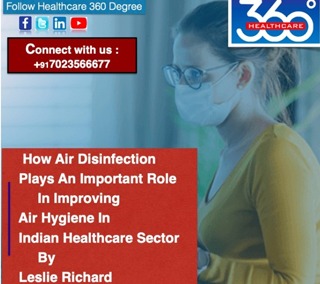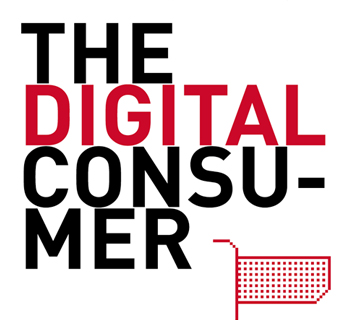We’re likely to see some dramatic changes in the world of healthcare. With private equity acquisitions on the rise, retailization in high demand, and some fierce competition, Now time to start treating
Your healthcare organization like the business it is.Make 2019 the year you find what works for your medical marketing.
These 10 Hospital marketing strategies can help you find and keep higher-paying cases. Stay ready for the competitive atmosphere in the coming months and years .
Here are 10 Hospital Marketing Strategies
1. Audit your current medical marketing strategies
First things first—how are your current marketing strategies working out? If you’re blindly trusting processes you’ve had in place for months or years—without any data to back up their impact—it’s time for an audit.
If you’re doing your own marketing, determine if the time and expense really back up the results. Does your team spend too much time on social media? Rely too heavily on word-of-mouth marketing? Spend too little effort nurturing doctor referrals?
If you have an outside marketing company, on the other hand, it’s time to demand the data. If you have inconsistent ad copy, lackluster design, and no results to back it up, it may be time to find someone new.
2. Change your messaging to be more “you”-centered
Some healthcare organizations are so focused on providing detailed information, they forget the most important question of all. Why should a prospective patient choose your team over any other?
The content on your website, social media, digital ads, and any traditional advertising must offer benefit to the patients. To put it simply, it should focus on what the organization can do for “you.” Your copy should use this magic word–“you”–liberally and answer some key questions. Put yourself in a patient’s shoes.
Reading the copy, do you feel the organization has something unique to offer? What can “you” expect to gain? Can you get back to work sooner? Recover faster? Live pain-free and enjoy new activities?
3. Break into social media advertising
Use the term “organic” to talk about types of marketing that don’t require paying for advertisements, including search engine optimization and posting updates on social media. And while organic social media is one of many methods to build your brand, it’s simply not the most effective way to get noticed.
Facebook is the most widely used social media platform—by seniors and millennials alike. Of course, your practice, hospital, or organization can build out a business page and post for free. But it’s tough to attract followers, and even as you do, you can expect very few followers to see your posts.
4. Target patients you’ve already seen
Attracting new patients is a major goal for organizations of all sizes—but seeing returning patients should be an even higher priority for most. After all, the cost to acquire new patients can be 10 times more than the cost for patient retention.
Acquiring new patients is only the beginning of your medical marketing efforts. It’s important to follow up with patients and keep your name at top of mind. That means sending follow-up emails or mailers, as well as continuing to market for brand recognition. Often, this can come in the form of an email newsletter.

5. Get brutally honest about your website design
Is your website truly helping to bring in new patients? It’s time to get real and ask yourself tough questions about the look and feel of your site (and/or any landing pages you use with digital advertising).
Aim to WOW your prospective patients, not just to give them basic information. Remember: today, you cannot simply compare your website design to colleagues’ and competitors’. Patients care that your website is up-to-date, and they’re comparing it with standards set by other industries. A website that looks behind-the-times may be a deterrent, as patients see this as a reflection of your office.
6. Take advantage of Facebook Live
This is a strategy we’ve been learning more and more about in the last couple of years—and we’ve grown to love it. Sharing video on Facebook is a great way to build awareness of your brand. But too often, thanks to new algorithms like “Friends & Family First,” your followers never see those carefully filmed and edited recordings.
Facebook Live, however, actually prioritizes live video through its algorithms. Followers are alerted that you’re sharing helpful information on your timeline, increasing viewership dramatically. Past and prospective patients may share this content, increasing brand awareness and helping people in your community get useful health information.
7. Leverage existing content
Larger healthcare organizations like hospitals and health systems often create quality online content that simply loses momentum after a week or so. They post about it on social media, bank a few “likes,” and move on to the next piece of content.
But this content could serve a greater purpose. For example, you can repurpose content for email sequences. You can even “gate” content on your website so that interested parties must provide their email address and sign up for your weekly newsletter.
You may also repurpose particularly compelling content in paid advertising. Leverage ebooks and long-form articles as Facebook ads or even in paid search, depending on your medical marketing goals.
8. Ask for patient referrals
If restaurants, retail stores, and coffee shops can do it, why not healthcare? If someone tells you they had a great experience at your place of business, ask for a referral!
“Thanks! Please let your friends and family know we’re here.” …is a start. You can also refer them to online review sites (as long as this doesn’t violate the terms and conditions of that service).
For larger organizations and those looking to grow, there’s an even easier way to do things. Reputation management systems automate the process: unhappy patients are given an outlet to express their concerns, while happy patients have the opportunity to spread the word online.
9. Lead important discussions
“Thought leadership” is a common goal among many doctors and healthcare professionals. And you may not have to write a book or speak on a national talk show to gain recognition. Leading and joining important discussions can boost earned media. Typically, all you need is a website, a camera, a social media account, and some savvy marketing and public relations.
Sharing great content online—content that others will want to share—is the first step in gaining earned media from local news stations, along with larger opportunities. Videos typically get better engagement than images and text posts, and it helps to speak about the topics your audience cares most about.
10.Invest in your staff training as much as you can .
All healthcare organizations do their best to ensure their staff is polite, understands HIPAA, and stays organized. But too few organizations work to actively train staff members to convert calls.
You can spend money on beautiful ad campaigns that get the phone to ring. But all that means nothing if your staff isn’t prepared to convert calls.
It takes more than a friendly personality. In our years as healthcare marketing professionals, we’ve seen up to half of an organization’s inquiries go nowhere, largely because the staff was not trained to make the “sale”: armed with the right information, professionalism, and counterarguments to book that appointment.
Invest in professional staff training and see your new patient inquiries go to the right place!
If you need any support in Hospital for Recovery / Old Outstanding , Acceriditation , Training , NABH Consultancy , NABL Consultancy , Marketing and Operation Outsourced , Managing your Hospital with less cost , Market Feasibility Study , techno feasibility Study , Hospital Planning and Design , you can contact Healthcare 360 Degree (Innovation in Healthcare) us [email protected] , infohc360.in Or you can visit our website www.hc360.in or can call +91-7023566677 .











































